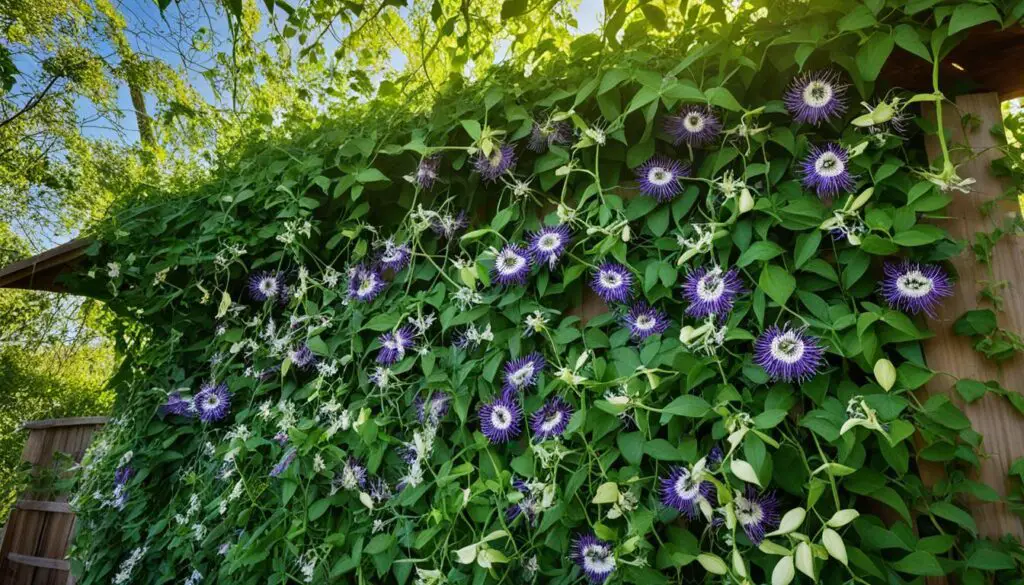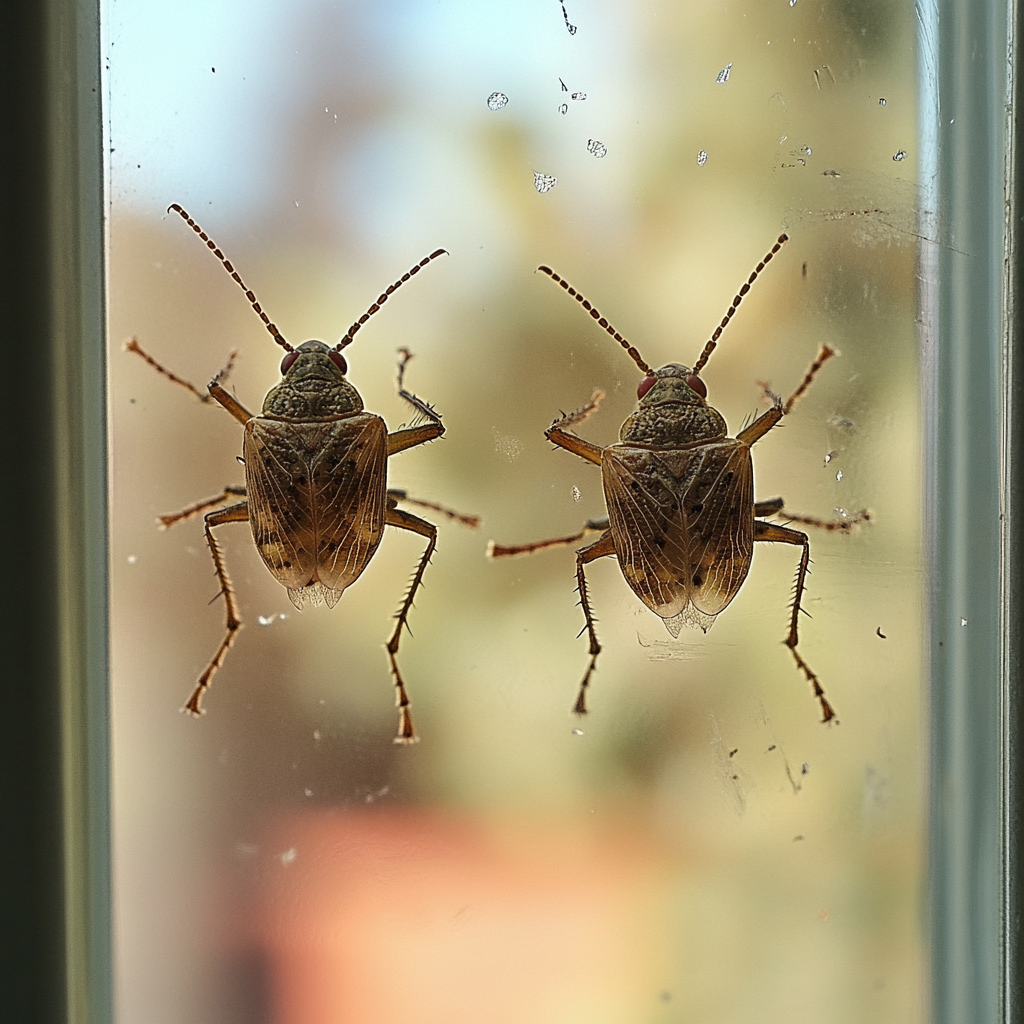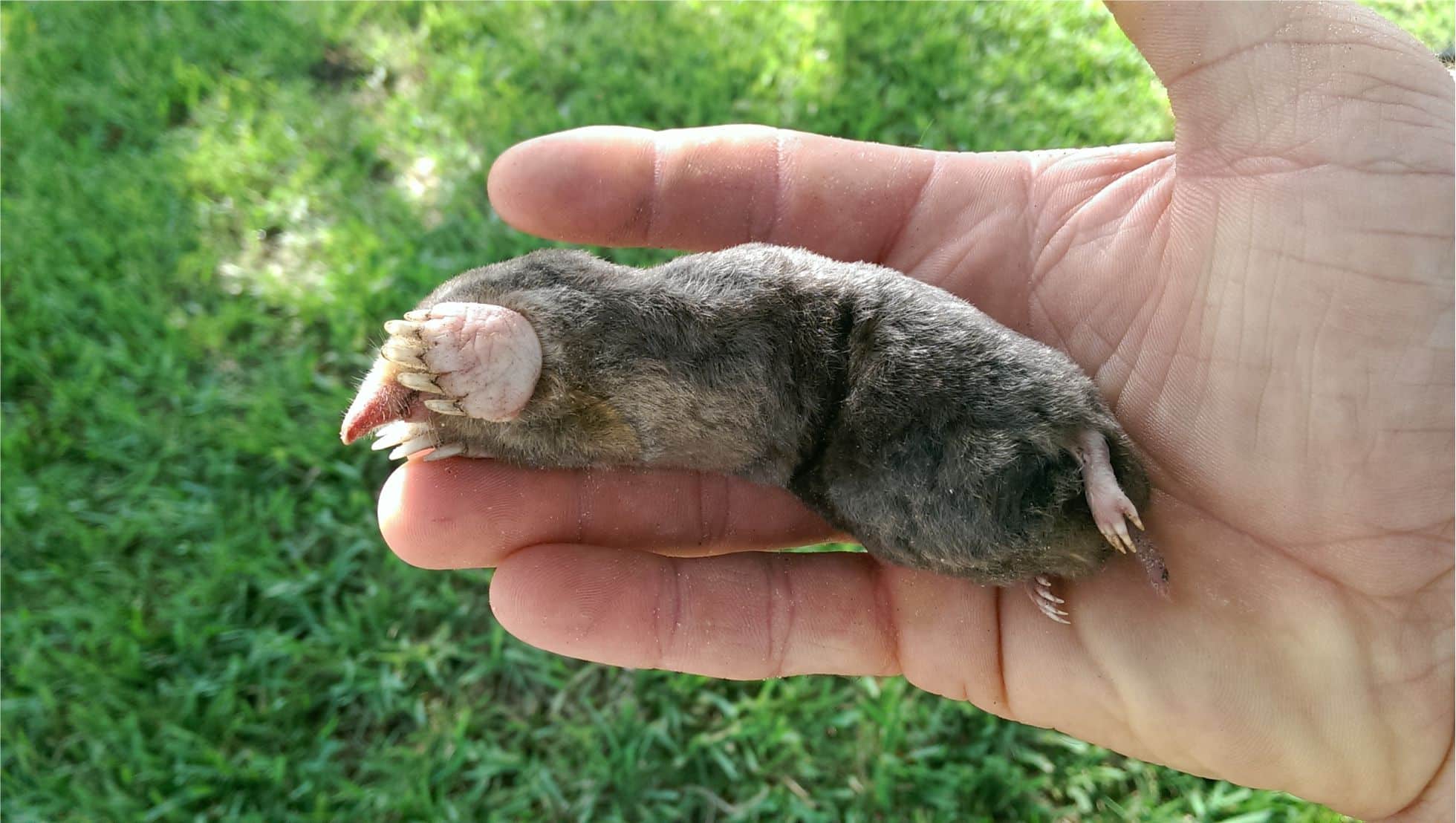Passionflowers, also known as passion flowers, are easy vines that love to climb. They can grow on fences, trellises, or arbors. These vines have unique leaves and flowers that come in many colors like purple, pink, and green.
They can grow quite long, up to 30 feet. Most passionflowers have edible fruits that taste a bit tart.
These flowers attract bees, butterflies, bats, and hummingbirds. They are easy to care for and don’t need much attention.
Pruning is mainly done to keep the vine in check and encourage more growth. It helps remove deadwood and makes the vine look fuller.

Key Takeaways
- Passionflowers are easy-to-grow vines that can reach up to 30 feet in length.
- Passionflowers attract a variety of pollinators, including bees, butterflies, bats, and hummingbirds.
- Passionflowers are low maintenance and do not require deadheading, but regular pruning can help control their size and promote fuller growth.
- Passionflowers prefer moderate to high humidity and benefit from regular fertilization.
- Propagation of passionflowers can be done through softwood stem cuttings or layering.
Introduction to Passionflowers
Common Names and Botanical Information
Passionflowers, also known as passion vines or maypops, are fascinating plants. They belong to the Passifloraceae family.
These vines can grow up to 30 feet tall and 6 feet wide, making gardens look beautiful with their blooms.
The botanical name for these plants is Passiflora spp. They are native to Central and South America, North America, and parts of Asia and Oceania.
These plants have many common names, like passionflower, passion flower vine, maypop, and granadilla. These names highlight their unique traits and origins.
Passionflowers are famous for their intricate flowers that bloom in summer. They come in colors like blue, purple, red, and white. Their flowers look like a “crown of thorns,” earning them the nickname “Christ’s Crown.”
Most passionflower species prefer a greenhouse or conservatory. But, some hardy varieties can handle cooler temperatures. The Passiflora caerulea, or blue passion flower, is a frost-resistant species. It’s a popular choice for outdoor gardens in milder climates.
There are over 400 species of passionflowers. From the Passiflora ‘Damsel’s Delight’ with big blooms to the Passiflora ‘Rubra’ with red-magenta flowers, they offer many visual delights. These plants are a treat for gardeners and nature lovers.
Grow A Passionflower and Care
To grow a passionflower well, you need to consider a few key things. They love full sunlight to partial shade.
Tropical types prefer warm temperatures and high humidity. Plant them in soil that drains well but is not too dry.
Put them in a spot that’s safe from harsh weather, like against a garden wall. This keeps them warm in winter.
Passionflowers need about 1 to 1 1/2 inches of water each week when they’re young. Once they’re grown, they can handle less water.
In early spring, feed them a balanced fertilizer to help them grow strong. Keep feeding them every four to six weeks until early autumn.
| Fertilizer Product | Average Rating | Price Range |
|---|---|---|
| 20 20 20 Garden Fertilizer | 4.9 out of 5.0 | $49.99 and up |
| Chilean Nitrate Fertilizer | 5.0 out of 5.0 | $39.99 and up |
| Pelletized Gypsum Soil Conditioner | 4.86 out of 5.0 | $29.99 and up |
| Fish and Guano Fertilizer | 5.0 out of 5.0 | $19.99 |
| Calcium Nitrate Fertilizer | 5.0 out of 5.0 | $34.99 and up |
By following these tips for sunlight, soil, watering, and fertilization, you can make your passionflower happy. This will help it bloom beautifully all season.
Propagation and Planting
Want to grow your own passionflowers? You’re in luck! Passionflowers can be easily spread through different methods. You can choose between taking stem cuttings or growing them from seeds, depending on what you like.
Propagating from Cuttings
For quick results, try taking softwood stem cuttings. Pick a 4- to 6-inch stem in spring or fall, just below a node. Remove the lower leaves and dip the cut end in rooting hormone.
Plant the cutting in well-draining potting mix. Within a month, you should see new growth, which means it’s working.
Propagating from Seed
Growing passionflowers from seeds takes longer but is fulfilling. Fresh seeds germinate in 2-4 weeks, but older seeds might take 4-8 weeks or more. Be patient, as some species can take up to 10 years to bloom.
Layering for Propagation
Layering is another way to propagate passionflowers. In late summer, pick a vine tip and bury it in the ground. Cover it with soil. In a month, the stem will root, letting you move the new plant to its final spot.
Planting Passionflowers
When planting, choose a spot that’s protected and provide support like a trellis. Passionflowers can also do well in containers, but they’ll need more water and food to grow well.

“Passionflowers are not only beautiful, but they’re also surprisingly easy to propagate and grow, making them a rewarding addition to any garden.”
Maintenance and Pruning
As a passionate gardener, I love taking care of my passionflowers. These vines are easy to maintain, but pruning is key to keeping them looking great. I prune them in late winter or early spring, right before new growth starts.
Pruning keeps the vine size in check and promotes fuller growth. I cut back old, flowered stems to encourage new, strong shoots.
For passionflowers in pots, I move them indoors for winter to protect them from the cold. They may look dull during this time, but they always come back strong in spring.
Passionflowers are usually pest-free, but they can get infested with scale insects, spider mites, whiteflies, and diseases like leaf spot and root rot.
If I see any problems, I use homemade insecticidal soap or fungicides. Watching my passionflowers closely and fixing issues early keeps them healthy and blooming year after year.
FAQ
What are the common names for passionflowers?
Passionflowers are also known as passion flower vine, maypop, and granadilla. They are often called passionflower.
What is the botanical name for passionflowers?
The botanical name for these plants is Passiflora spp. They are part of the Passifloraceae family.
How tall and wide can passionflower vines grow?
These vines can grow quite tall, up to 30 feet, and wide, up to 6 feet.
What are the sunlight and soil requirements for growing passionflowers?
They love full sun to partial shade and prefer soil that drains well. Make sure they’re in a spot that protects them from winter.
How often should I water and fertilize passionflowers?
Water them 1 to 1 1/2 inches per week until they’re established. Then, they can handle drought better. Feed them a balanced fertilizer in early spring and again every four to six weeks until autumn starts.
How can I propagate passionflowers?
You can start new plants in spring or fall with cuttings, layering, or seeds. Seeds take longer and won’t always produce the same plant type.
Do passionflowers need pruning?
Yes, pruning them helps control the vine size and promotes more growth. Do this in late winter or early spring, before new growth starts.
What pests and diseases can affect passionflowers?
They might face problems with scale, spider mites, whiteflies, and diseases like leaf spot and root rot. You can fight these with homemade soap solutions or fungicides.



